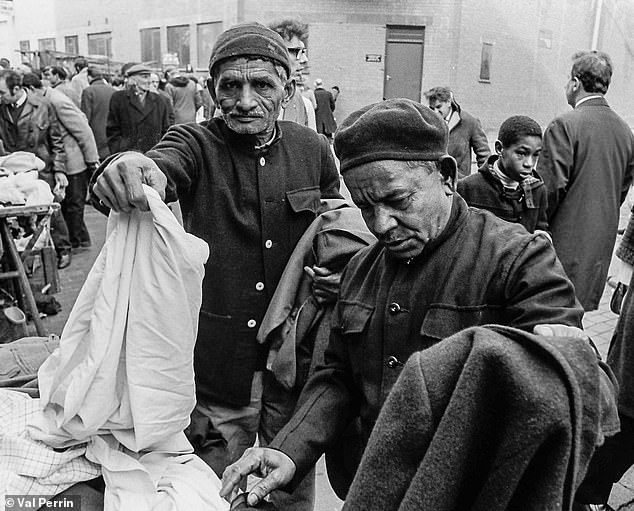Before glass towers and modern office blocks dominated London’s skyline, the East End was a very different world — one of narrow streets, small family shops, and a gritty kind of beauty that has long since disappeared.
A new exhibition is taking visitors back to that forgotten era, capturing what life really looked like between 1970 and 1976 — a time of change, resilience, and community.
Capturing a World on the Brink of Change
The exhibition, titled A World Apart: Photographing Change in London’s East End, showcases striking images that feel almost like a step into the Victorian past.
These photos, taken decades ago, show scenes of poverty, makeshift shops, and crumbling buildings — yet they pulse with life.
One particularly powerful shot shows a butcher selling chickens as bulldozers rumble behind him, a literal picture of progress pushing through the old.
In another, a mother and her young daughter stand proudly outside their Whitechapel home — a house that would soon vanish under the city’s relentless redevelopment.
The East End Before the Skyscrapers
Back then, bomb sites from the Second World War still scarred the landscape.
Streets filled with lifeless remnants of factories and warehouses were being torn down to make way for something new.
By the time the 1990s arrived, much of that old East End had disappeared — replaced by the gleaming towers of the Docklands and Canary Wharf, symbols of modern London’s ambition.
The Photographers Who Told the Story
The collection comes from a group of young, passionate photographers — Ron McCormick, Nicholas Battye, Alex Slotzkin, Diane Bush, and Paul Trevor — who were determined to document the East End’s transformation.
At the time, their work wasn’t hanging in fancy galleries.
Instead, they displayed their photos in launderettes, housing estates, and even on sandwich boards, bringing art directly to the people who lived those stories every day.
Everyday Lives in a Changing Community
Through their lenses, we see a melting pot of cultures and generations.
There are new arrivals from Bengal and India living side by side with Jewish shopkeepers and skilled artisans who had called the East End home for years.
One photo captures the lively E1 Festival in Stepney, full of colour, laughter, and togetherness — proof that even amid hardship, the spirit of community remained strong.
Whitechapel’s Living History
Many of the most evocative images were taken in Whitechapel, a neighbourhood forever haunted by its past — once the hunting ground of the infamous Jack the Ripper.
In these photos, the area is reborn in a different light: a watch repairer bent over his cluttered desk, a deli owner smartly dressed and proudly greeting customers, and a Bengali family sitting together in their small flat, creating a sense of warmth and belonging.
Markets, Docks, and Daily Life
At Brick Lane Market, the photographers captured a hive of energy — traders shouting, children running between stalls, and the smell of food filling the air.
But in nearby Wapping, the tone shifts.
There, people are seen walking past demolished wharves and empty docks — a stark reminder of the end of an era when shipping and trade had defined the East End’s heartbeat.
From Bomb Damage to Renewal
The exhibition doesn’t shy away from showing the scars left by history.
During the Second World War, the East End was hit hard by German bombing raids, leaving behind not only ruins but a legacy of endurance.
These photographs show a community that refused to give up — one that continued to rebuild, reimagine, and adapt.
Honouring the Past Through Art
Made possible by support from the National Lottery Heritage Fund, this exhibition ensures that the story of the old East End isn’t forgotten.
It’s more than just a look back — it’s a tribute to the people who lived through enormous change with quiet dignity and strength.
Where to See It
A World Apart: Photographing Change in London’s East End, 1970–1976 is open to the public at the Four Corners Gallery in Bethnal Green until December 6.
For anyone curious about the London that once was — before steel, glass, and gentrification — this exhibition offers a rare and moving window into a world that no longer exists.
Share on Facebook «||» Share on Twitter «||» Share on Reddit «||» Share on LinkedIn
